Family: Tenthredinidae
Family common name: common sawflies
Subfamily: Tenthredininae
Tribe: Tenthredinini
Genus: Lagium Konow, 1904
Subgenera: none
The Tenthredinidae are the most species-rich family and are found throughout the world, in all continents but Antarctica. They are known as the “common sawflies.” They can generally be recognized by a cylindrical body and long, segmented antennaeantenna:
the sensory organ emerging from the front of the head, usually between the compound eyes and above the clypeus; includes the flagellum, scape and pedicel
 . Otherwise, they come in a variety of colors, sizes, and forms (Goulet 1992Goulet 1992:
. Otherwise, they come in a variety of colors, sizes, and forms (Goulet 1992Goulet 1992:
Goulet H. 1992. The genera and subgenera of the sawflies of Canada and Alaska: Hymenoptera. Symphyta. The insects and arachnids of Canada. Part 20. Agriculture Canada Publication.).
Sawflies in the Tenthredininae subfamily are relatively large compared to others in the family, often with distinct colorful markings. Some are wasp-like with black and yellow stripes (Goulet 1992Goulet 1992:
Goulet H. 1992. The genera and subgenera of the sawflies of Canada and Alaska: Hymenoptera. Symphyta. The insects and arachnids of Canada. Part 20. Agriculture Canada Publication.). Many species’ life histories are not known. Some Tenthredininae species feed uniquely, as adults, on flower pollen and other insects (Smith 1993Smith 1993:
Smith DR. 1993. Systematics, life history, and distribution of sawflies. Pp. 3-32. In: Wagner MR and Raffa KF, eds. Sawfly Life History Adaptations to Woody Plants. University of Minnesota Academic Press. 581 pp.). They can be distinguished from other subfamilies by wing venationvenation:
the network of veins on a wing
(Goulet 1992Goulet 1992:
Goulet H. 1992. The genera and subgenera of the sawflies of Canada and Alaska: Hymenoptera. Symphyta. The insects and arachnids of Canada. Part 20. Agriculture Canada Publication.).
Lagium is a small genus of relatively large sawflies (13–16 mm). Lagium atroviolaceum in North America can be recognized by the size, black body, and completely darkened wings (Smith 1986bSmith 1986b:
Smith DR. 1986b. Review of the sawfly genus Lagium (Hymenoptera: Tenthredinidae). Proceedings of the Entomological Society of Washington 88 (1): 179-184.).
There are two described extantextant:
in existence; opposite of extinct
species worldwide. One occurs in North America (Taeger et al. 2010Taeger et al. 2010:
Taeger A, Blank SM, and Liston AD. 2010. World Catalog of Symphyta (Hymenoptera). Zootaxa 2580: 1-1064.).
Subfamily characters
 vein M and 1m-cu parallel (Goulet 1992Goulet 1992:
vein M and 1m-cu parallel (Goulet 1992Goulet 1992: vein R bent at basebase:
vein R bent at basebase: Sc (Goulet 1992Goulet 1992:
Sc (Goulet 1992Goulet 1992: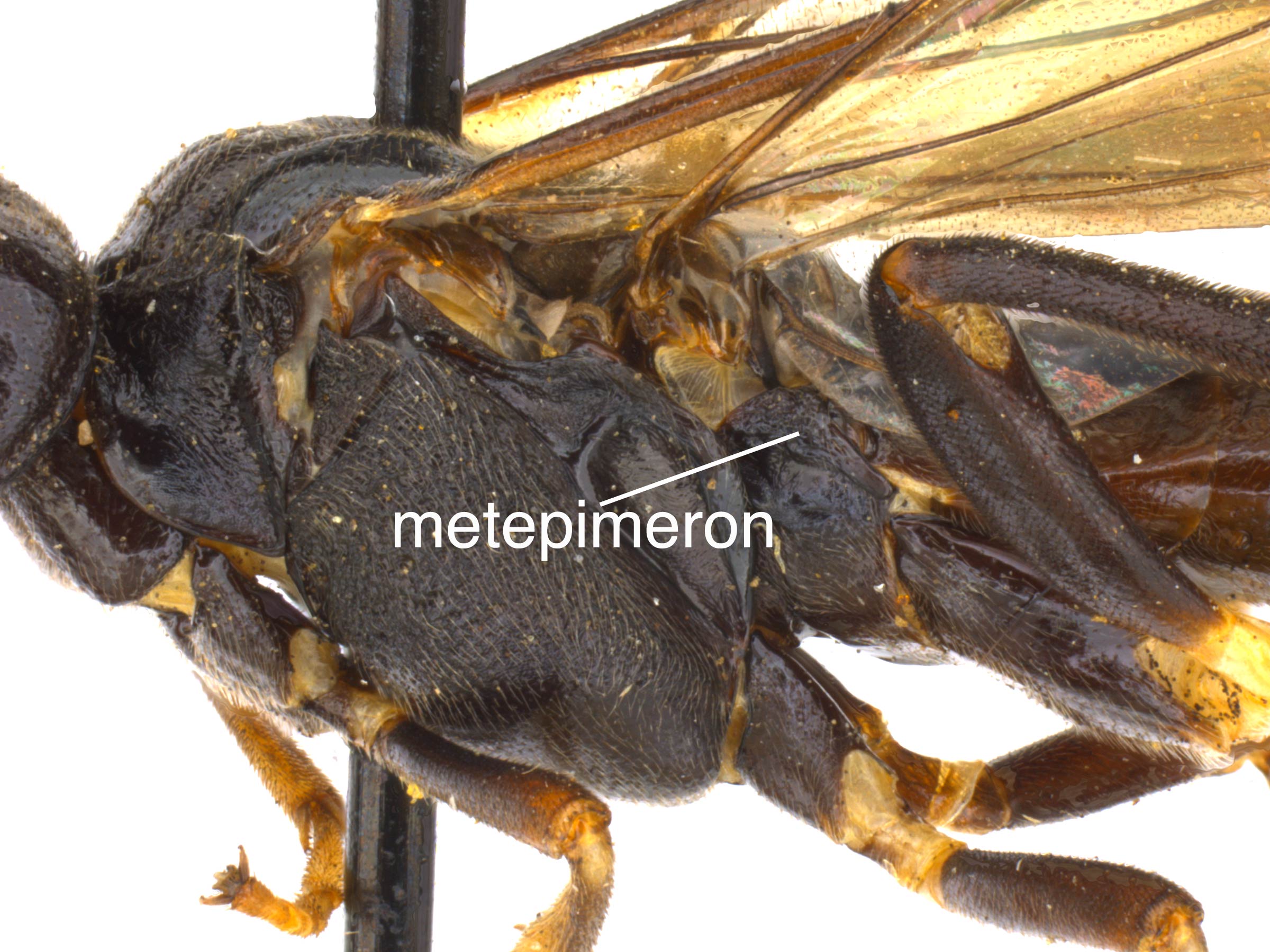 separated from metepisternummetepisternum:
separated from metepisternummetepisternum: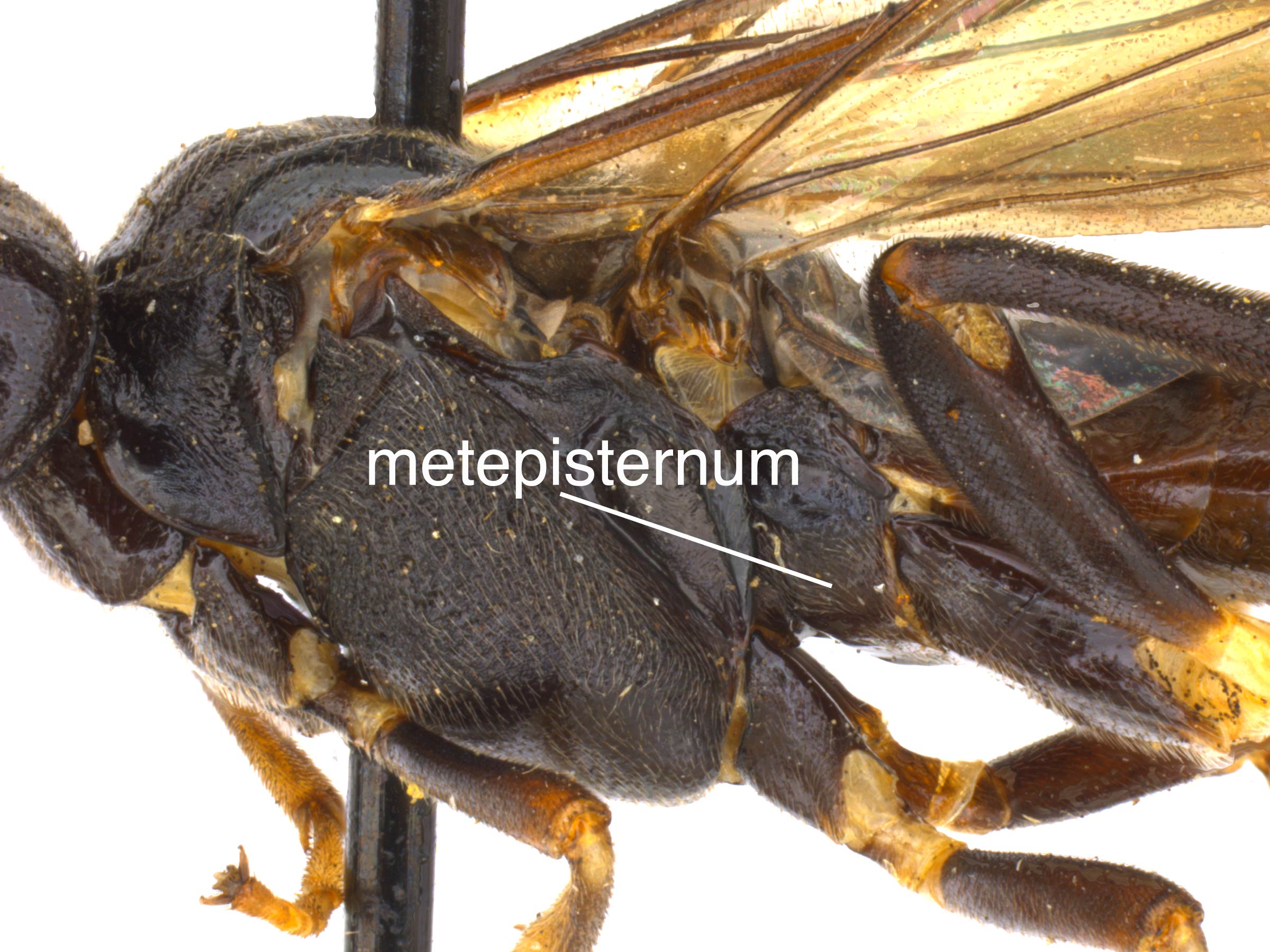 by distinct furrowfurrow:
by distinct furrowfurrow: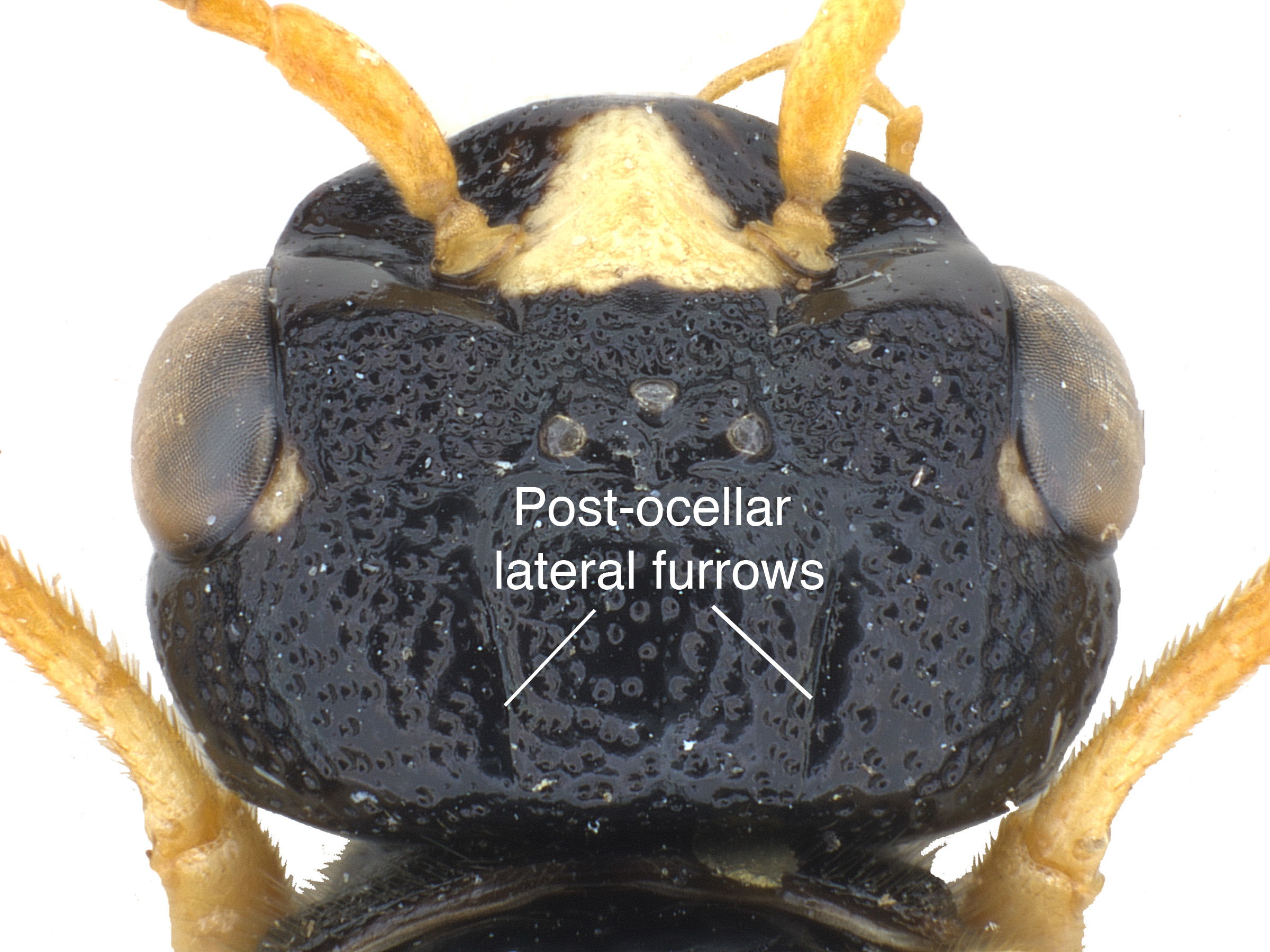 (Goulet 1992Goulet 1992:
(Goulet 1992Goulet 1992:Genus characters
 margin straight or slightly shallowly emarginated (Goulet 1992Goulet 1992:
margin straight or slightly shallowly emarginated (Goulet 1992Goulet 1992: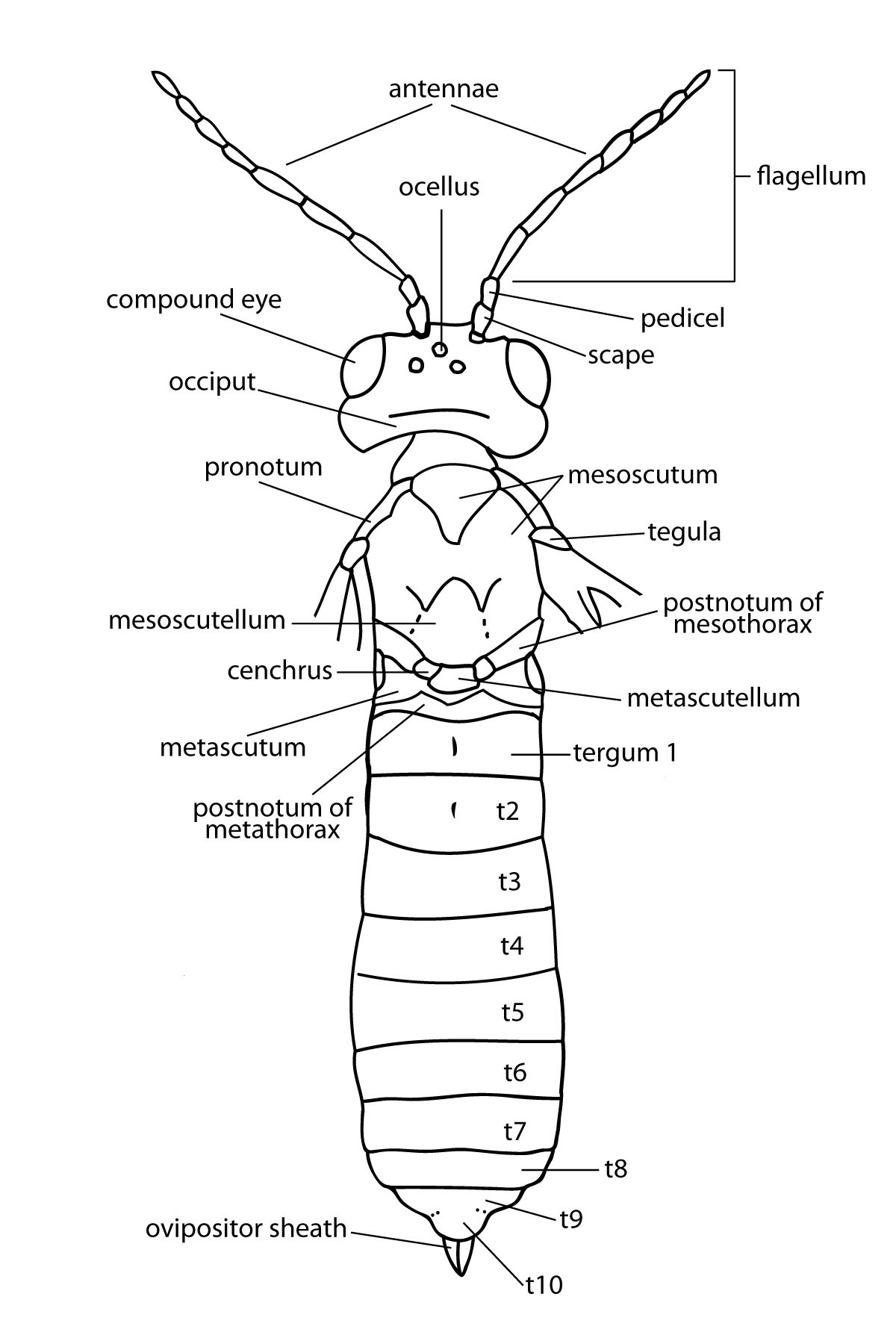 ridge extending from mandiblemandible:
ridge extending from mandiblemandible: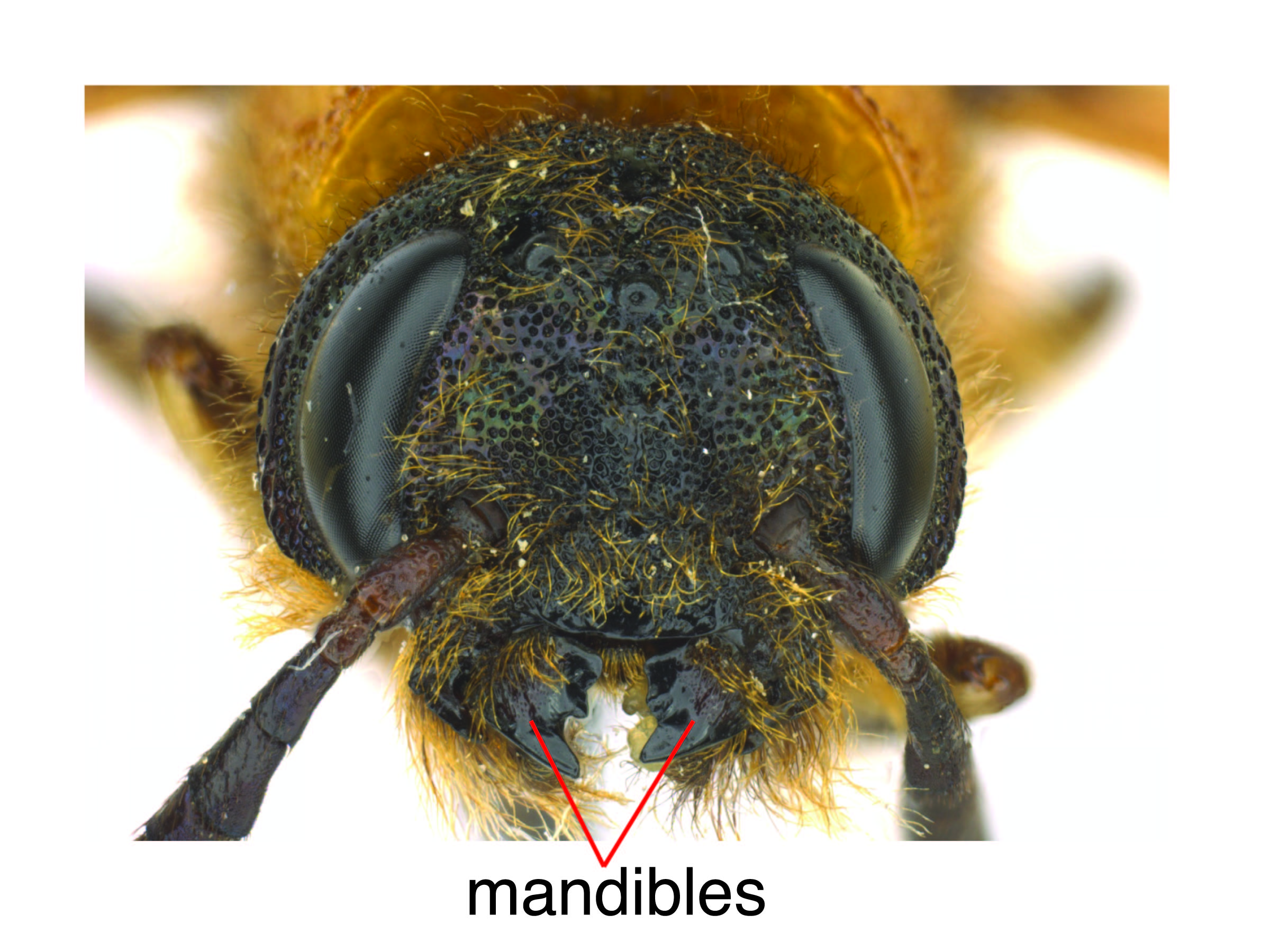 to near post-ocellar area (Goulet 1992Goulet 1992:
to near post-ocellar area (Goulet 1992Goulet 1992: vein 2A+3A complete, connected to 1A by crossveincrossvein:
vein 2A+3A complete, connected to 1A by crossveincrossvein: anal crossveinanal crossvein:
anal crossveinanal crossvein: vein 2r present (Goulet 1992Goulet 1992:
vein 2r present (Goulet 1992Goulet 1992: vein M intersecting Sc+R basalbasal:
vein M intersecting Sc+R basalbasal: veins 1m-cu and Cu1 120°–150° (Goulet 1992Goulet 1992:
veins 1m-cu and Cu1 120°–150° (Goulet 1992Goulet 1992: anal crossveinanal crossvein:
anal crossveinanal crossvein: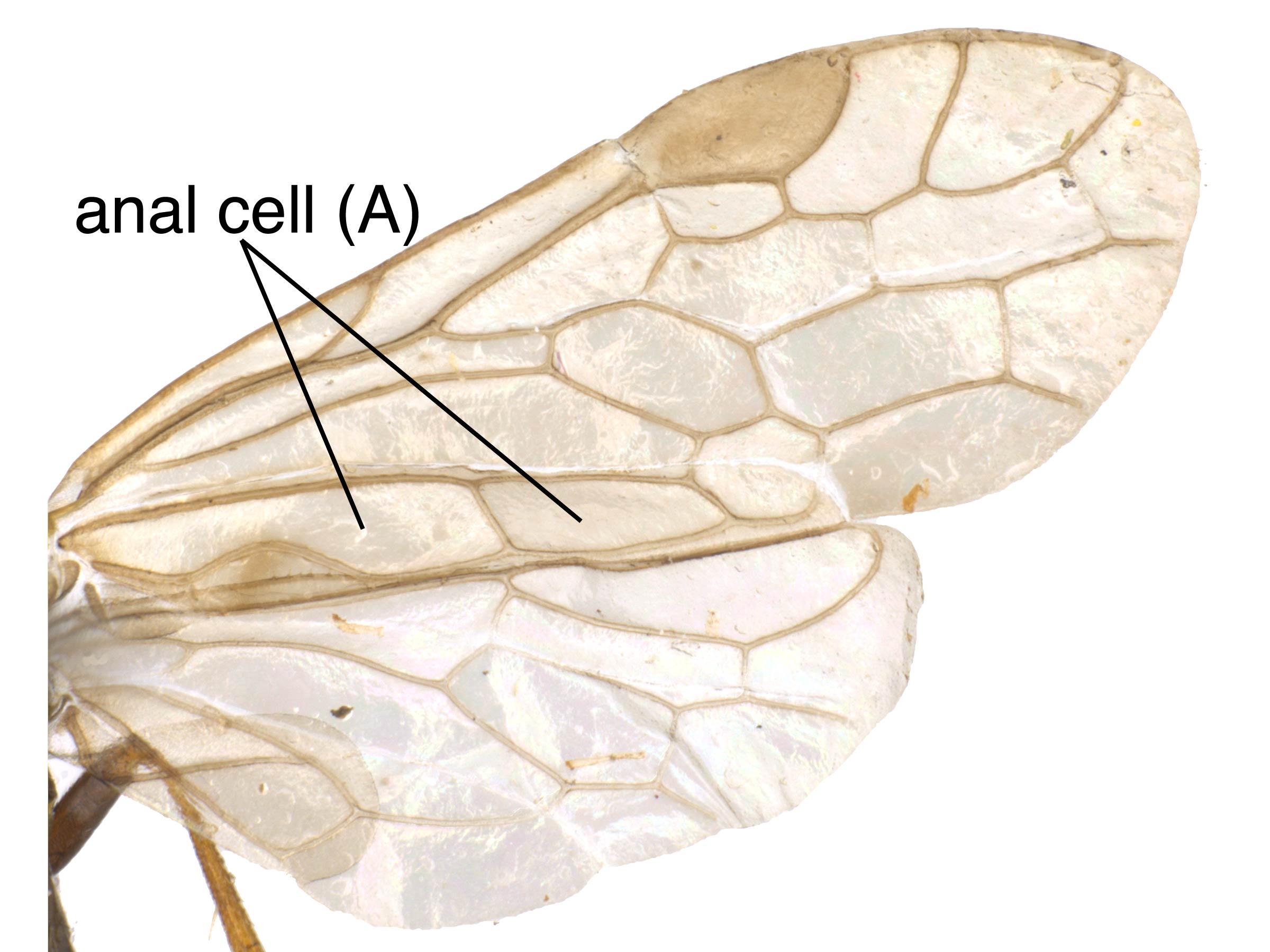 (Goulet 1992Goulet 1992:
(Goulet 1992Goulet 1992: with peripheral veinvein:
with peripheral veinvein: (Smith 1986bSmith 1986b:
(Smith 1986bSmith 1986b: distinctly angled on lower posterior corner (Goulet 1992Goulet 1992:
distinctly angled on lower posterior corner (Goulet 1992Goulet 1992: with long inner tooth and without basalbasal:
with long inner tooth and without basalbasal: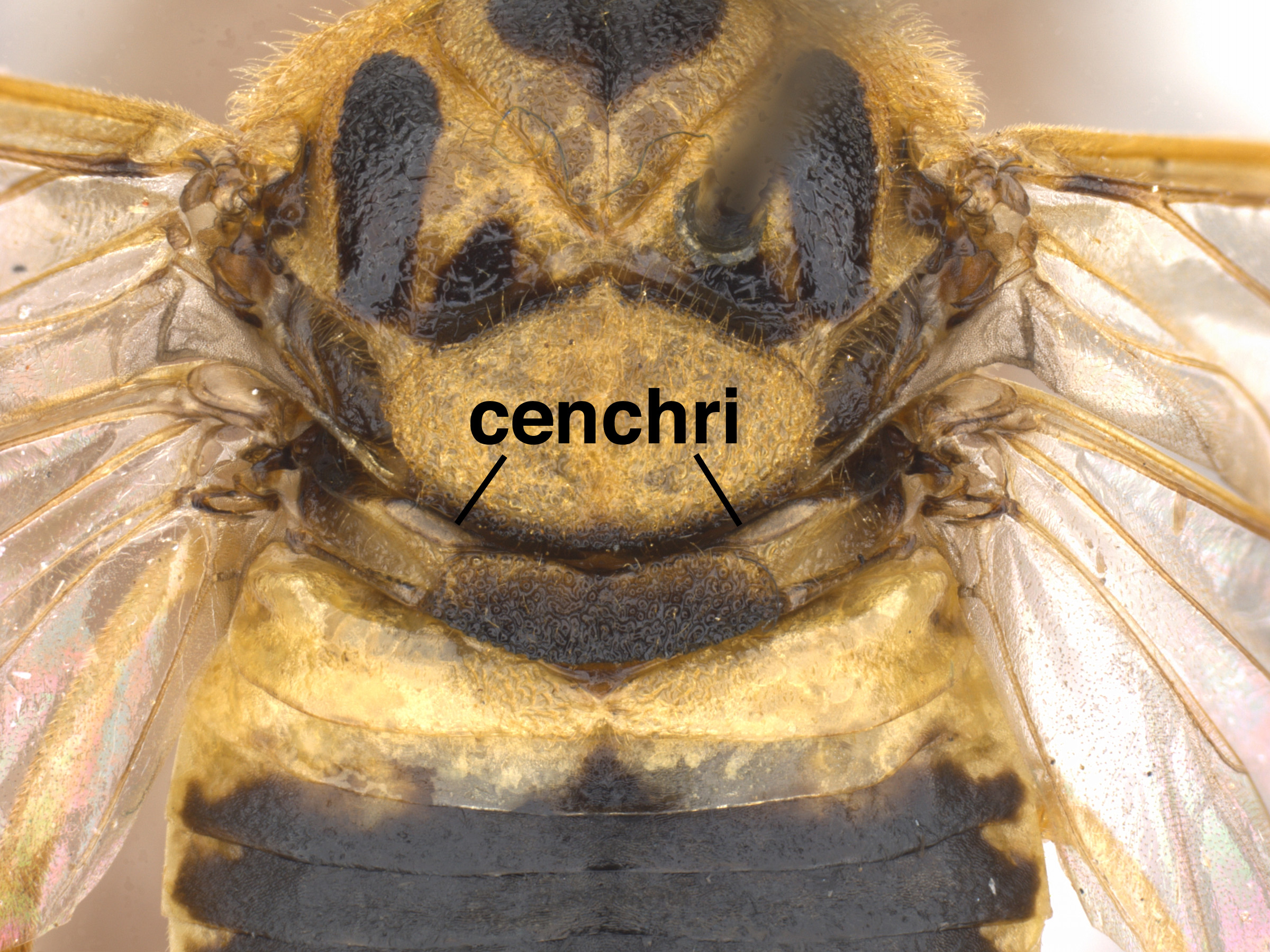 2X medial length of postnotumpostnotum:
2X medial length of postnotumpostnotum:Lagium can be confused with similar species in the subfamily Tenthredininae. It can be distinguished from most other genera by the angle on the posteroventralposteroventral:
describes location towards the back on the underside of the body; posterior and ventral
area of metepimeronmetepimeron:
the dorsal portion of the metapleuron
 , the location of the fore wingfore wing:
, the location of the fore wingfore wing:
the anterior wing of each pair of wings; usually the largest wing of the pair
 anal crossveinanal crossvein:
anal crossveinanal crossvein:
a crossvein that goes through the center of the basal anal cell
, and the relatively long postnotumpostnotum:
posterior section of the notum; also known as the subscutellum
(Goulet 1992Goulet 1992:
Goulet H. 1992. The genera and subgenera of the sawflies of Canada and Alaska: Hymenoptera. Symphyta. The insects and arachnids of Canada. Part 20. Agriculture Canada Publication.).
none
Lagium larvaelarva:
the immature stage of holometabolous insects
 feed on Sambucus (elderberry), including S. canadensis (American black elderberry), and Viburnum (Smith 1986bSmith 1986b:
feed on Sambucus (elderberry), including S. canadensis (American black elderberry), and Viburnum (Smith 1986bSmith 1986b:
Smith DR. 1986b. Review of the sawfly genus Lagium (Hymenoptera: Tenthredinidae). Proceedings of the Entomological Society of Washington 88 (1): 179-184., Smith 1994bSmith 1994b:
Smith DR. 1994b. The larva of Lagium atroviolaceum (Norton) (Hymenoptera: Tenthredinidae). Proceedings of the Entomological Society of Washington 96 (1): 139-142.).
The specific biology of L. atroviolaceum is not known. The larvalarva:
the immature stage of holometabolous insects
 is relatively large, about 3 cm at maturity, and somewhat distinctive. The body color is dull gray with numerous orange and black short, stout tubercles, and some short spines along the dorsum (Smith 1994bSmith 1994b:
is relatively large, about 3 cm at maturity, and somewhat distinctive. The body color is dull gray with numerous orange and black short, stout tubercles, and some short spines along the dorsum (Smith 1994bSmith 1994b:
Smith DR. 1994b. The larva of Lagium atroviolaceum (Norton) (Hymenoptera: Tenthredinidae). Proceedings of the Entomological Society of Washington 96 (1): 139-142.).
World: One species is North American, the other, Lagium apicale, occurs in China (Wei et al. 2006Wei et al. 2006:
Wei M, Nie H, and Taeger A. 2006. Sawflies (Hymenoptera: Symphyta) of Chinamdash;checklist and review of research. Pp. 505-574. In: Blank SM, Schmidt S, and Taeger A, eds. Recent sawfly research mdash; synthesis and prospects. Goecke amp; Evers, Keltern., Taeger et al. 2010Taeger et al. 2010:
Taeger A, Blank SM, and Liston AD. 2010. World Catalog of Symphyta (Hymenoptera). Zootaxa 2580: 1-1064.).
North America: Lagium atroviolaceum occurs in eastern North America, from New Brunswick through New England and the Great Lakes region, south to Louisiana and Georgia (Smith 1986bSmith 1986b:
Smith DR. 1986b. Review of the sawfly genus Lagium (Hymenoptera: Tenthredinidae). Proceedings of the Entomological Society of Washington 88 (1): 179-184.).
Map data from: GBIF.org (29 October 2019) GBIF Occurrence Download Lagium
Details about data used for maps can be found here.